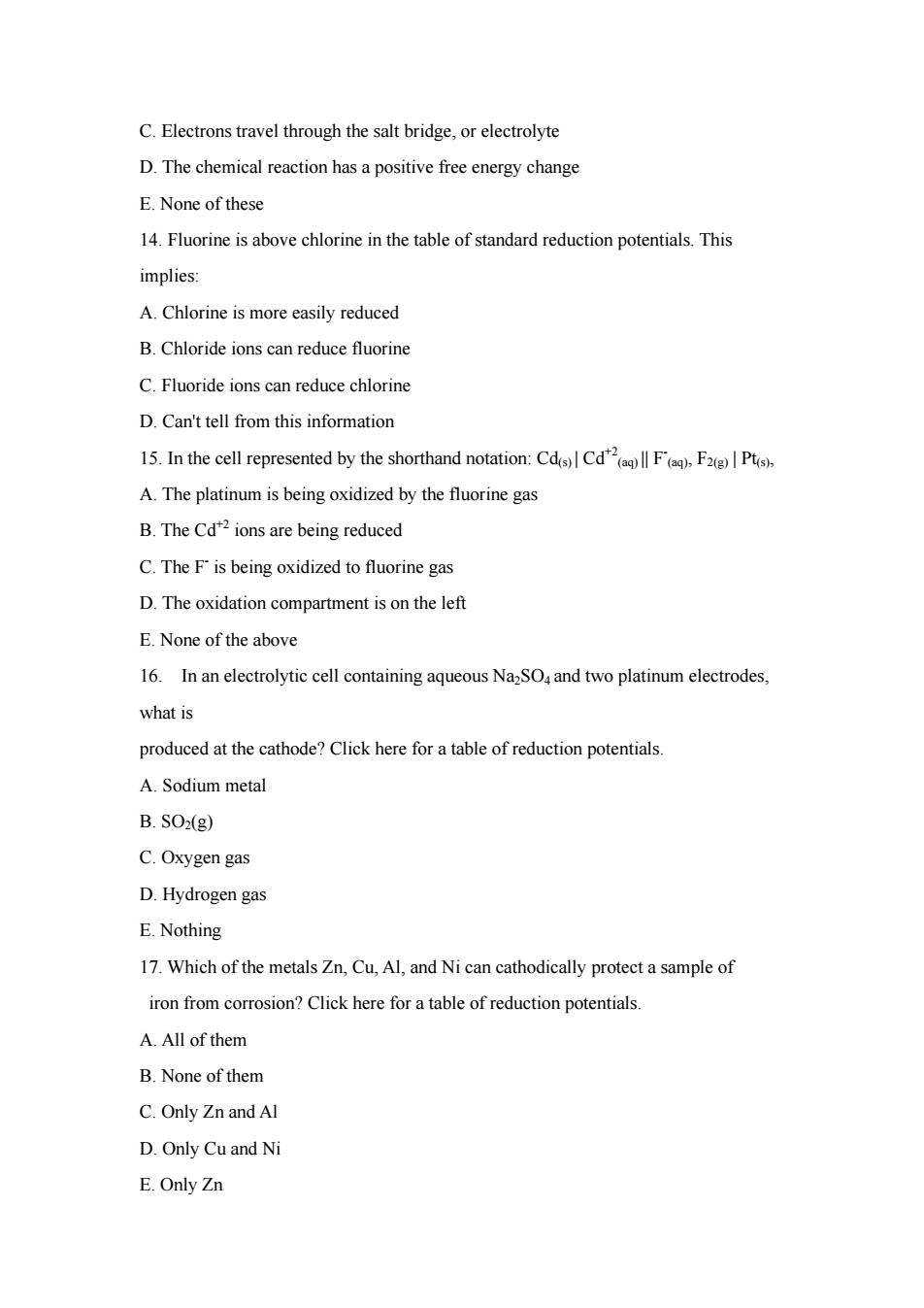正在加载图片...

C.Electrons travel through the salt bridge,or electrolyte D.The chemical reaction has a positive free energy change E.None of these 14.Fluorine is above chlorine in the table of standard reduction potentials.This implies: A.Chlorine is more easily reduced B.Chloride ions can reduce fluorine C.Fluoride ions can reduce chlorine D.Can't tell from this information 15.In the cell represented by the shorthand notation:CdCd FF P A.The platinum is being oxidized by the fluorine gas B.The Cd2ions are being reduced C.The F"is being oxidized to fluorine gas D.The oxidation compartment is on the left E.None of the above 16.In an electrolytic cell containing aqueous NaSOand two platinum electrodes, what is produced at the cathode?Click here for a table of reduction potentials A.Sodium metal B.S02(g) C.Oxygen gas D.Hydrogen gas E.Nothing 17.Which of the metals Zn,Cu,Al,and Ni can cathodically protect a sample of iron from corrosion?Click here for a table of reduction potentials. A.All of them B.None of them C.Only Zn and Al D.Only Cu and N E.Only Zn C. Electrons travel through the salt bridge, or electrolyte D. The chemical reaction has a positive free energy change E. None of these 14. Fluorine is above chlorine in the table of standard reduction potentials. This implies: A. Chlorine is more easily reduced B. Chloride ions can reduce fluorine C. Fluoride ions can reduce chlorine D. Can't tell from this information 15. In the cell represented by the shorthand notation: Cd(s) | Cd+2 (aq) || F- (aq), F2(g) | Pt(s), A. The platinum is being oxidized by the fluorine gas B. The Cd+2 ions are being reduced C. The F- is being oxidized to fluorine gas D. The oxidation compartment is on the left E. None of the above 16. In an electrolytic cell containing aqueous Na2SO4 and two platinum electrodes, what is produced at the cathode? Click here for a table of reduction potentials. A. Sodium metal B. SO2(g) C. Oxygen gas D. Hydrogen gas E. Nothing 17. Which of the metals Zn, Cu, Al, and Ni can cathodically protect a sample of iron from corrosion? Click here for a table of reduction potentials. A. All of them B. None of them C. Only Zn and Al D. Only Cu and Ni E. Only Zn 3